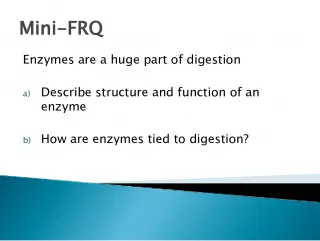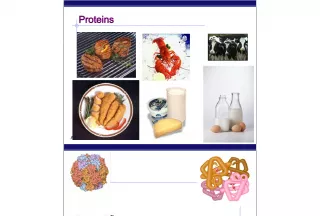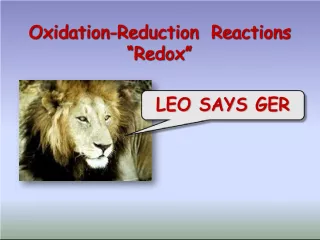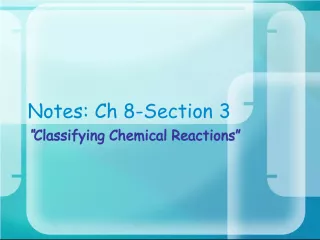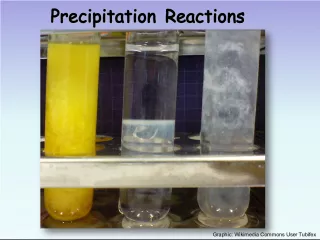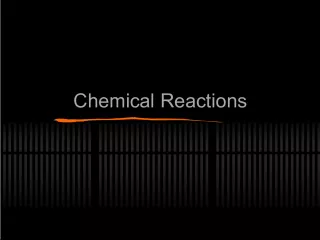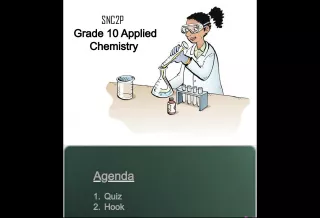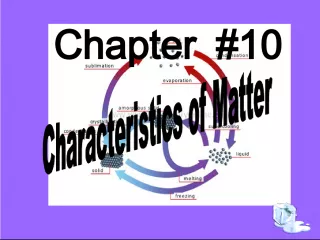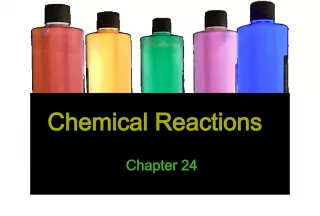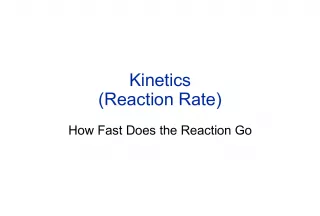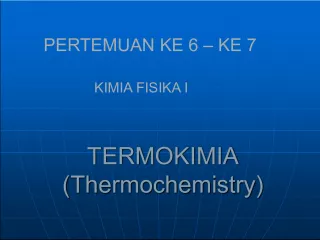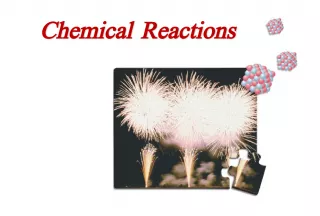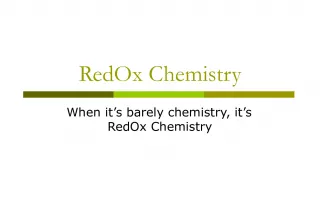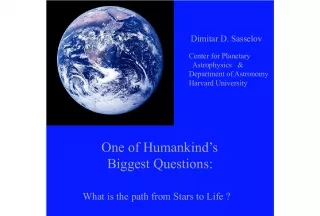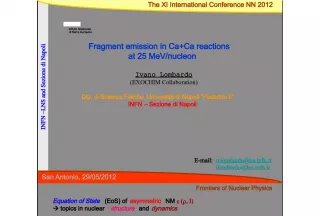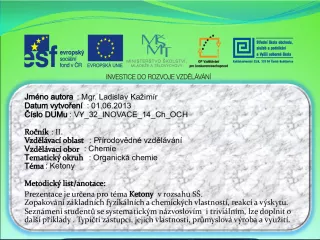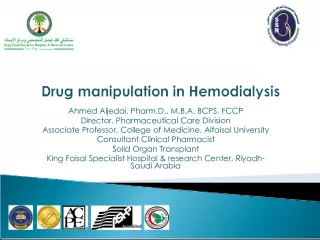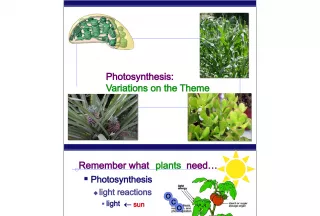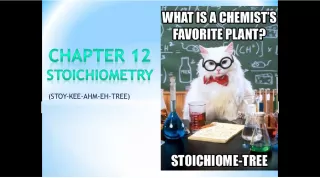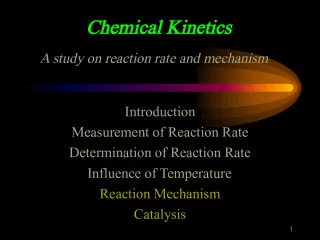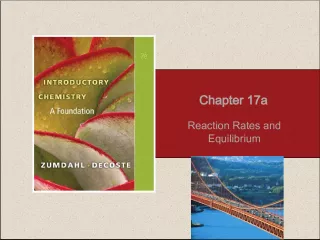Monooxygenation Reactions Catalyzed by Enzymes


Chapter 4 explores the typical reactions catalyzed by monooxygenases, including lactate oxidase from Mycobacteria which acts as a flavin-dependent hydroxylase without requiring an external reducing agent. One turnover experiments are also discussed, as well as how lactate oxidase can function as an oxidase under anaerobic conditions.
- Uploaded on | 0 Views
-
 krishasaniel
krishasaniel
About Monooxygenation Reactions Catalyzed by Enzymes
PowerPoint presentation about 'Monooxygenation Reactions Catalyzed by Enzymes'. This presentation describes the topic on Chapter 4 explores the typical reactions catalyzed by monooxygenases, including lactate oxidase from Mycobacteria which acts as a flavin-dependent hydroxylase without requiring an external reducing agent. One turnover experiments are also discussed, as well as how lactate oxidase can function as an oxidase under anaerobic conditions.. The key topics included in this slideshow are . Download this presentation absolutely free.
Presentation Transcript
1. The Organic Chemistry of Enzyme-Catalyzed Reactions Chapter 4 Monooxygenation
2. Table 4.1. Typical reactions catalyzed by monooxygenases Monooxygenation
3. Internal Monooxygenase Scheme 4.1 Reaction catalyzed by lactate oxidase from Mycobacteria Flavin-dependent Hydroxylases No external reducing agent required
4. One Turnover Experiment (enzyme concentration in excess over substrate) Scheme 4.2 Acting like an oxidase The lactate oxidase reaction under anaerobic conditions
5. Scheme 4.3 If O 2 is added first, then [ 14 C]pyruvate, pyruvate is unchanged and H 2 O 2 is formed. Therefore, pyruvate is an intermediate. Model study: Reaction of Reduced Lactate Oxidase with Pyruvate and Oxygen
6. Scheme 4.4 like DAAO flavin hydroperoxide acts as a nucleophile Possible Mechanisms for Lactate Oxidase electrophilic substrate
7. Scheme 4.5 External Monooxygenases NAD(P)H reduction of flavin O 2 activation Activated O 2 is probably in the form of flavin hydroperoxide
8. Nucleophilic Substrates stopped-flow spectroscopic evidence for boxed intermediates flavin hydroperoxide acts as electrophile electrophilic aromatic substitution Mechanism proposed for flavin-dependent hydroxylases Scheme 4.6
9. log V max for hydroxylation vs p K a linear free energy relationship = -0.5 Hammett Study p -hydroxybenzoate hydroxylase Consistent with electrophilic aromatic substitution (Electron deficient mechanism)
10. Electrophilic Substrates Scheme 4.7 long-chain aldehydes (electrophilic substrates) Reaction catalyzed by bacterial luciferase
11. Scheme 4.8 on warming isolated by cryoenzymology (-30 C in mixed aqueous-organic media) detected spectro- photometrically However, with 8-substituted FMN analogues rate increases with decreasing one electron oxidation potentials of analogues Nucleophilic Mechanism for Bacterial Luciferase electrophilic substrates
12. Scheme 4.9 SET Chemically Initiated Electron Exchange Luminescence (CIEEL) Mechanism for Bacterial Luciferase
13. Scheme 4.10 Alternative One-electron Mechanism via a Dioxirane SET k x / k h vs. p for 8-substituted flavins Dioxirane mechanism for bacterial luciferase = -4 (facilitated by e - donation) Inconsistent with Baeyer-Villiger mechanism ( values +0.2 to 0.6)
14. Scheme 4.11 Migratory aptitude - more e - donating group migrates (in the case above, R) Baeyer-Villiger Oxidation of Ketones
15. Scheme 4.12 Ketone Monooxygenases - an Example of a Baeyer-Villiger Oxidation C 4a -FAD hydroperoxide intermediate detected Reaction catalyzed by cyclohexane oxygenase
16. Scheme 4.13 same migratory aptitudes as nonenzymatic reaction Other Reactions Catalyzed by Cyclohexanone Oxygenase
17. Scheme 4.14 Cyclohexane Oxygenase Proceeds with Retention of Configuration (like nonenzymatic)
18. Scheme 4.15 Same migratory aptitude as nonenzymatic (3 > 2 > 1 > Me) Migratory Aptitude of Cyclohexanone Oxygenase-catalyzed Reaction
19. no loss of D (like nonenzymatic reaction)
20. Scheme 4.16 Baeyer-Villiger-type Mechanism Proposed for Cyclohexanone Oxygenase electrophilic substrate
21. Scheme 4.17 same as nonenzymatic reaction Reaction of Cyclohexanone Oxygenase with Boranes
22. Scheme 4.18 when R 1 = R 2 = Me 1 : 20 R 1 = H; R 2 = Me 1 : 1 (same as nonenzymatic reaction) Reactions Catalyzed by Ketone Monooxygenase
23. Scheme 4.19 >95% ee Reactions Catalyzed by the Ketone Monooxygenase from A. calcoaceticus 1S 1R 5S 5R >95% ee racemate
24. Scheme 4.20 Reactions Catalyzed by the Ketone Monooxygenase from P. putida >95% ee 1S 1R 5S 5R >95% ee 50% ee racemate
25. pteridine ring Pterin-dependent Monooxygenases aromatic hydroxylation
26. Fe 2+ also required for activity Only a few enzymes require tetrahydrobiopterin Important in biosynthesis of dopa, norepinephrine, epinephrine, and serotonin Reactions similar to flavoenzymes Tetrahydrobiopterin
27. Scheme 4.21 Comparison of the Dihydrobiopterin and Tetrahydrobiopterin with Oxidized Flavin and Reduced Flavin
28. Scheme 4.22 NIH shift [1,2] migration Similar to flavin hydroxylases except 2 H washed out with flavoenzymes Reaction Catalyzed by Phenylalanine Hydroxylase
29. Possible Intermediate
30. Scheme 4.23 discussed with heme- dependent enzymes Mechanism of the Reaction Catalyzed by Tetrahydrobiopterin-dependent Monooxygenases nucleophilic substrate
31. Scheme 4.24 Evidence for Arene Oxide Intermediate Reaction of dihydrophenylalanine with phenylalanine hydroxylase
32. Scheme 4.25 Incubation with [4- 2 H]Phe should favor formation of Arene Oxide Mechanism Proposed for Tetrahydrobiopterin-dependent Monooxygenases m -Tyr Tyr Therefore, not an arene oxide intermediate m -Tyr (isotope effect), and [3,5- 2 H 2 ]Phe should favor Tyr, but they do not.
33. Scheme 4.26 Fe as X is larger The larger the size of X, the more m -Tyr product Cationic Mechanism Proposed for Tetrahydrobiopterin-dependent Monooxygenases m -Tyr = -5 (cation-like TS )
34. These species could account for alkyl hydroxylation products (heme chemistry), e.g. with hydroxylation here Alternative Species
35. Heme Cytochrome P450s (>500 different isozymes) require NAD(P)H and O 2 Protection from xenobiotics Heme-Dependent Monooxygenases
36. Reactions Catalyzed by Heme-dependent Monooxygenases + + - -
37. Scheme 4.27 low-spin state high-spin state In P450cam Thr-252 means isolated and characterized Fe III more readily accepts e - cytochrome P450 reductase calculations favor this structure Molecular Oxygen Activation by Heme- dependent Monooxygenases (requires NADPH)
38. Scheme 4.28 Alkane Hydroxylation 3 > 2 > 1 Intermolecular isotope effect < 2 (suggests C-H cleavage is not the rate-determining step) retention of configuration Two-step radical mechanism with oxygen rebound for alkane oxygenation by heme- dependent monooxygenases C-H cleavage during catalysis Intramolecular isotope effect > 11
39. Scrambling of stereochemistry supports 2-step radical mechanism Scheme 4.29 Products from the Reaction of all Exo - 2,3,5,6-tetradeuterionorbornane with the CYP2B4 Isozyme of Cytochrome P450
40. Scheme 4.30 Radical Clocks - detection of radical intermediates known The rate of hydroxylation can be calculated (lifetime of radical intermediate) Radical clock approach for determination of reaction rates in radical rearrangement reactions
41. Scheme 4.31 Example of Radical Clock a From k r = 2 10 9 s -1 and the ratio of a / b , can calculate k OH = 2.4 10 11 s -1 b Cytochrome P450-catalyzed monooxygenation of a cyclopropane analogue
42. Scheme 4.32 Perdeuteration (CD 3 ) gives Cytochrome P450-catalyzed Oxidation of Trans -1-methyl-2-phenylcyclopropane increased pathway b called metabolic switching
43. Scheme 4.33 Evidence against a True Radical Intermediate 3 10 11 s -1 very little k OH has to be faster than the decomposition of a TS (6 10 12 s -1 ); therefore propose carbocation after oxidation step Another ultrafast radical clock reaction catalyzed by cytochrome P450
44. Scheme 4.34 based on nonenzymatic reactions With CYP2B1 - mostly unrearranged, but small amount of both 4.48 and 4.51 ; therefore radical lifetime is 70 fs A Hypersensitive Radical Probe Substrate to Differentiate a Radical from a Cation Intermediate Generated by Cytochrome P450
45. Scheme 4.35 General conclusion: More than one oxidizing species involving more than one pathway with multiple high- energy heme complexes (radical and cation) A Concerted, but Nonsynchronous, Mechanism Proposed for Cytochrome P450
46. Scheme 4.36 Alkene Epoxidation lifetime? Two-step radical mechanism with oxygen rebound for alkene oxygenation by heme- dependent monooxygenases
47. Evidence for Short-lived Radical only cyclopropyl/carbinyl radical rearrangement not detected Scheme 4.37 Cytochrome P450-catalyzed epoxidation of trans -1-phenyl-2-vinylcyclopropane
48. Arene Hydroxylation Isolation of first arene oxide Scheme 4.38 Is it an intermediate or side product? Cytochrome P450-catalyzed formation of an arene oxide
49. Scheme 4.39 Evidence for a Cyclohexadienone Intermediate either same product and 2 H incorporation from both isomers A common intermediate in the oxygenation of naphthalene Should have observed 1- and 2- hydroxynaphthalene because of an isotope effect
50. Scheme 4.40 concerted stepwise Evidence against concerted: 1) no deuterium isotope effect 2) Hammett plot shows large - Concerted (pathway a ) and Stepwise (pathway b ) Mechanisms for the Potential Conversion of an Arene Oxide to a Cyclohexadienone (carbocation intermediate)
51. Scheme 4.41 Isotope Effect and Hammett Studies Indicate either Radical or Cation (or both) Intermediates, but not Arene Oxide reasonable unfavorable favorable NIH shift Electrophilic addition when R is o / p directing, get mostly p product when R is m -directing, get m and p products Mechanism proposed for heme-dependent oxygenation of aromatic compounds
52. Sulfur Oxygenation Scheme 4.42 Linear free energy relationship: log k cat vs. one-electron oxidation potential as well as + Electron transfer mechanism proposed for heme-dependent oxygenation of sulfides
53. Scheme 4.43 N -Dealkylation Electron transfer mechanism proposed for heme-dependent oxygenation of tertiary amines With primary and secondary amines hydrogen atom abstraction mechanism favored (see next slide)
54. Scheme 4.44 O -Dealkylation Not electron transfer mechanism-- Hydrogen atom abstraction mechanism proposed for heme-dependent oxygenation of ethers oxidation potential for oxygen is too high
55. C-C Bond Cleavage Scheme 4.45 androstenedione estrone Reaction catalyzed by aromatase
56. Scheme 4.46 also a substrate also a substrate Fate of the Atoms during Aromatase-catalyzed Conversion of Androstenedione to Estrone First two oxygenation steps proceed by normal heme hydroxylation mechanism
57. Scheme 4.47 heme peroxide like Fl-OO - addition to aldehydes Three Possible Mechanisms for the Last Step in the Aromatase-catalyzed Oxygenation of Androstenedione
58. Evidence for Heme Peroxide Mechanism retained Fe IV -O would have abstracted a C 21 CH 3 hydrogen or a C 16 or C 17 H Scheme 4.48 Oxidation of pregnenolone, catalyzed by an isozyme of cytochrome P450 (P450 17 )
59. Scheme 4.49 In 2 H 2 O, ketene would give H 2 C 2 HCOO 2 H; no 2 H found in CH 3 group of acetate, therefore not Fe IV -O retained Hydrogen Atom Abstraction Mechanism, Using a Heme Iron Oxo Species, for the P450 17 -catalyzed Oxygenation of Pregnenolone
60. Scheme 4.50 Mutation of Thr-302 (T302A) in P450 2B4 (needed for formation of iron oxo species) decreased hydroxylation activity, but increased deacylation (nucleophilic) activity Evidence for a Nucleophilic Mechanism, Using Heme Peroxy Anion Followed by a Radical Decomposition of the Heme Peroxide, for the P450 17 -catalyzed Oxygenation of Pregnenolone
61. Scheme 4.51 Further Evidence for Heme Peroxide isolated, also a substrate Nucleophilic mechanism, using heme peroxy anion followed by a Baeyer-Villiger rearrangement, for the lanosterol 14 - methyl demethylase-catalyzed oxygenation of lanosterol
62. Scheme 4.52 Nucleophilic Mechanism, Using Heme Peroxy Anion, Followed by a Radical Decomposition of the Heme Peroxide, for the Lanosterol 14 -Methyl Demethylase-catalyzed Oxygenation of Lanosterol Would Not Give the Baeyer-Villiger Product No formate ester formed
63. Synthesized to test Baeyer-Villiger mechanism with aromatase - no estrone Maybe aromatase and P450 17 have different mechanisms from that of lanosterol 14 -methyl demethylase
64. Scheme 4.53 gives aromatase product Model Studies on the Mechanism of Aromatase
65. Scheme 4.54 Revised Aromatase Mechanism Mechanism proposed for aromatase initiated by dienol formation
66. Nonheme Iron Oxygenation Methane monooxygenases binuclear iron cluster CH 4 CH 3 OH
67. Scheme 4.55 * soluble methane monooxygenase XAS and Mssbauer spectroscopy support 4.83a , not 4.83b Studies with the hypersensitive cyclopropane probe ( 4.46 , Scheme 4.34) and methylcubane indicate a cation, not radical, intermediate Therefore mechanism like P450 Binuclear Ferric Cluster of Methane Monooxygenase
68. Scheme 4.56 Copper-dependent Oxygenation from ascorbic acid Optimal activity with 2 Cu II per subunit one Cu II catalyzes e - transfer from ascorbate one Cu II catalyzes oxygen insertion into substrate Reaction catalyzed by dopamine -monooxygenase
69. Scheme 4.57 Hammett plot = -1.5 fits better to than + , suggesting a radical with a polar TS +H + Mechanism Proposed for Dopamine -Monooxygenase

